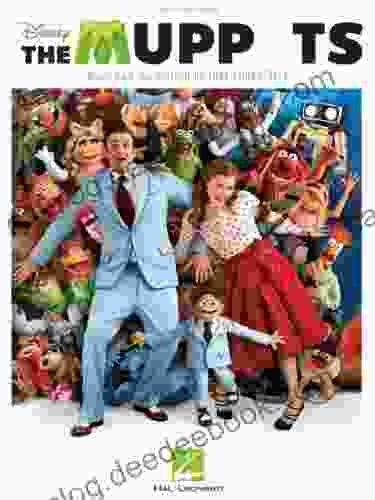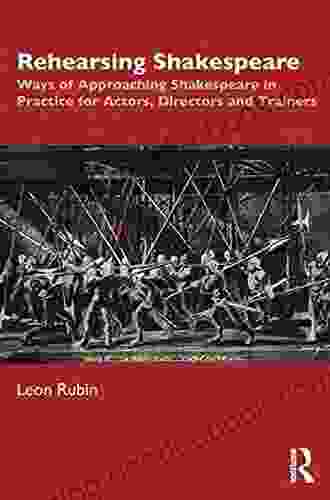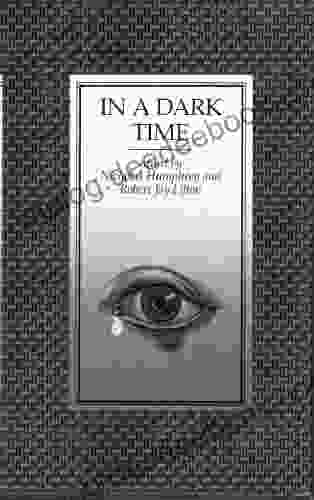Ways Of Approaching Shakespeare In Practice For Actors, Directors, And Trainers

William Shakespeare's plays have captivated audiences for centuries, and they continue to be a rich source of material for actors, directors, and trainers. However, the sheer complexity and richness of Shakespeare's works can make them a daunting prospect to approach. This article will explore different ways of approaching Shakespeare in practice, with a particular focus on the needs of actors, directors, and trainers.
Text Analysis
The first step in approaching Shakespeare is to thoroughly analyze the text. This involves reading the play multiple times, paying close attention to the language, structure, and characters. It is also important to research the historical and cultural context of the play, as this can provide valuable insights into the characters' motivations and the play's themes.
4.4 out of 5
| Language | : | English |
| File size | : | 3921 KB |
| Print length | : | 180 pages |
One common approach to text analysis is to break the play down into smaller units, such as scenes, speeches, and even individual lines. This can help to make the text more manageable and easier to understand. It is also helpful to identify the key themes and motifs of the play, as these can provide a framework for understanding the characters and the plot.
Characterisation
Once you have a good understanding of the text, you can begin to develop the characters. This involves creating a backstory for each character, understanding their motivations, and finding ways to bring them to life on stage. It is important to remember that Shakespeare's characters are not simply two-dimensional stereotypes, but complex and multifaceted individuals.
There are many different techniques that can be used to develop characters. One common approach is to use Stanislavski's method, which involves creating a detailed psychological profile of the character and then using this information to inform your performance. Another approach is to use Michael Chekhov's method, which focuses on the use of physical and vocal exercises to create a more expressive and dynamic performance.
Staging
Once you have developed the characters, you need to start thinking about how to stage the play. This involves deciding on the setting, blocking the actors, and designing the costumes and lighting. The staging should be carefully considered, as it can have a significant impact on the overall tone and atmosphere of the production.
There are many different approaches to staging Shakespeare. One common approach is to use a traditional proscenium stage, with the audience seated in front of a raised platform. Another approach is to use a more flexible space, such as a black box theater, which allows for more creative staging possibilities.
Rehearsal
The rehearsal process is a crucial part of preparing a Shakespeare production. This is where the actors, director, and trainers come together to bring the play to life. The rehearsal process should be used to develop the characters, refine the staging, and work on the overall interpretation of the play.
There are many different ways to conduct a rehearsal. One common approach is to start with table work, where the actors and director sit around a table and read through the play. This can help to build a strong foundation for the production and to identify any potential problems. Once the actors have a good understanding of the text, they can begin to move into more physical rehearsals, where they can work on blocking and characterisation.
Interpretation
The final step in approaching Shakespeare in practice is to develop an interpretation of the play. This involves deciding on the overall meaning and message of the play, and then finding ways to communicate this to the audience. The interpretation should be carefully considered, as it will shape the entire production.
There are many different approaches to interpreting Shakespeare. One common approach is to focus on the play's historical and cultural context. Another approach is to focus on the play's psychological themes. Ultimately, the interpretation of the play is up to the individual director and actors.
Approaching Shakespeare in practice can be a challenging but rewarding experience. By following the steps outlined in this article, actors, directors, and trainers can unlock the richness and complexity of Shakespeare's works and create productions that will engage and inspire audiences.
4.4 out of 5
| Language | : | English |
| File size | : | 3921 KB |
| Print length | : | 180 pages |
Do you want to contribute by writing guest posts on this blog?
Please contact us and send us a resume of previous articles that you have written.
 Book
Book Novel
Novel Text
Text Genre
Genre Reader
Reader Library
Library Magazine
Magazine Paragraph
Paragraph Sentence
Sentence Bookmark
Bookmark Shelf
Shelf Glossary
Glossary Bibliography
Bibliography Preface
Preface Synopsis
Synopsis Footnote
Footnote Codex
Codex Bestseller
Bestseller Library card
Library card Narrative
Narrative Memoir
Memoir Dictionary
Dictionary Thesaurus
Thesaurus Character
Character Resolution
Resolution Card Catalog
Card Catalog Borrowing
Borrowing Archives
Archives Research
Research Lending
Lending Academic
Academic Reading Room
Reading Room Rare Books
Rare Books Literacy
Literacy Study Group
Study Group Thesis
Thesis Awards
Awards Book Club
Book Club Theory
Theory Textbooks
Textbooks Brian Groom
Brian Groom Alan Dworsky
Alan Dworsky Akil Kumarasamy
Akil Kumarasamy Jo Rippon
Jo Rippon Patrick Humphries
Patrick Humphries Betty Walker
Betty Walker Brendan Deneen
Brendan Deneen Baruti K Kafele
Baruti K Kafele Maxim Gorki
Maxim Gorki Akiyo Kajiwara
Akiyo Kajiwara Alan Cathcart
Alan Cathcart Ron Yule
Ron Yule Richard Caldwell
Richard Caldwell Glenn N Levine
Glenn N Levine Alan Charles Kors
Alan Charles Kors Herbert Hoover
Herbert Hoover Andrea Flynn
Andrea Flynn Willy Peter Reese
Willy Peter Reese Brent R Crandal
Brent R Crandal Amanda Laoupi
Amanda Laoupi
Light bulbAdvertise smarter! Our strategic ad space ensures maximum exposure. Reserve your spot today!

 Robert Louis StevensonMusic From The Motion Picture Soundtrack Piano Voix Gu: A Journey Through...
Robert Louis StevensonMusic From The Motion Picture Soundtrack Piano Voix Gu: A Journey Through... Vernon BlairFollow ·11.8k
Vernon BlairFollow ·11.8k Ernest J. GainesFollow ·16.3k
Ernest J. GainesFollow ·16.3k Allen GinsbergFollow ·15.3k
Allen GinsbergFollow ·15.3k Benji PowellFollow ·13.2k
Benji PowellFollow ·13.2k Jack PowellFollow ·9.9k
Jack PowellFollow ·9.9k Robert HeinleinFollow ·6.8k
Robert HeinleinFollow ·6.8k David MitchellFollow ·18k
David MitchellFollow ·18k Eddie PowellFollow ·3.6k
Eddie PowellFollow ·3.6k

 Hayden Mitchell
Hayden MitchellThe Routledge Handbook of Feminist Peace Research: A...
The Routledge...

 Joe Simmons
Joe SimmonsUnveiling the Lyrical Mastery of Henri Cole's "Blizzard...
In the realm of...

 E.E. Cummings
E.E. CummingsEast End Hardman To Tv Star: The Unlikely Rise Of Danny...
Danny Dyer is one of the...

 Eli Brooks
Eli BrooksMusic in the Tradition of Thich Nhat Hanh: A Journey of...
In the heart of...

 Samuel Ward
Samuel WardAmazing Scenes in Plastic Canvas: Bringing Your...
Plastic canvas is a...

 E.E. Cummings
E.E. CummingsA Comprehensive Guide to Non-Jazz Improvisation for...
: Embracing the Art of...
4.4 out of 5
| Language | : | English |
| File size | : | 3921 KB |
| Print length | : | 180 pages |









